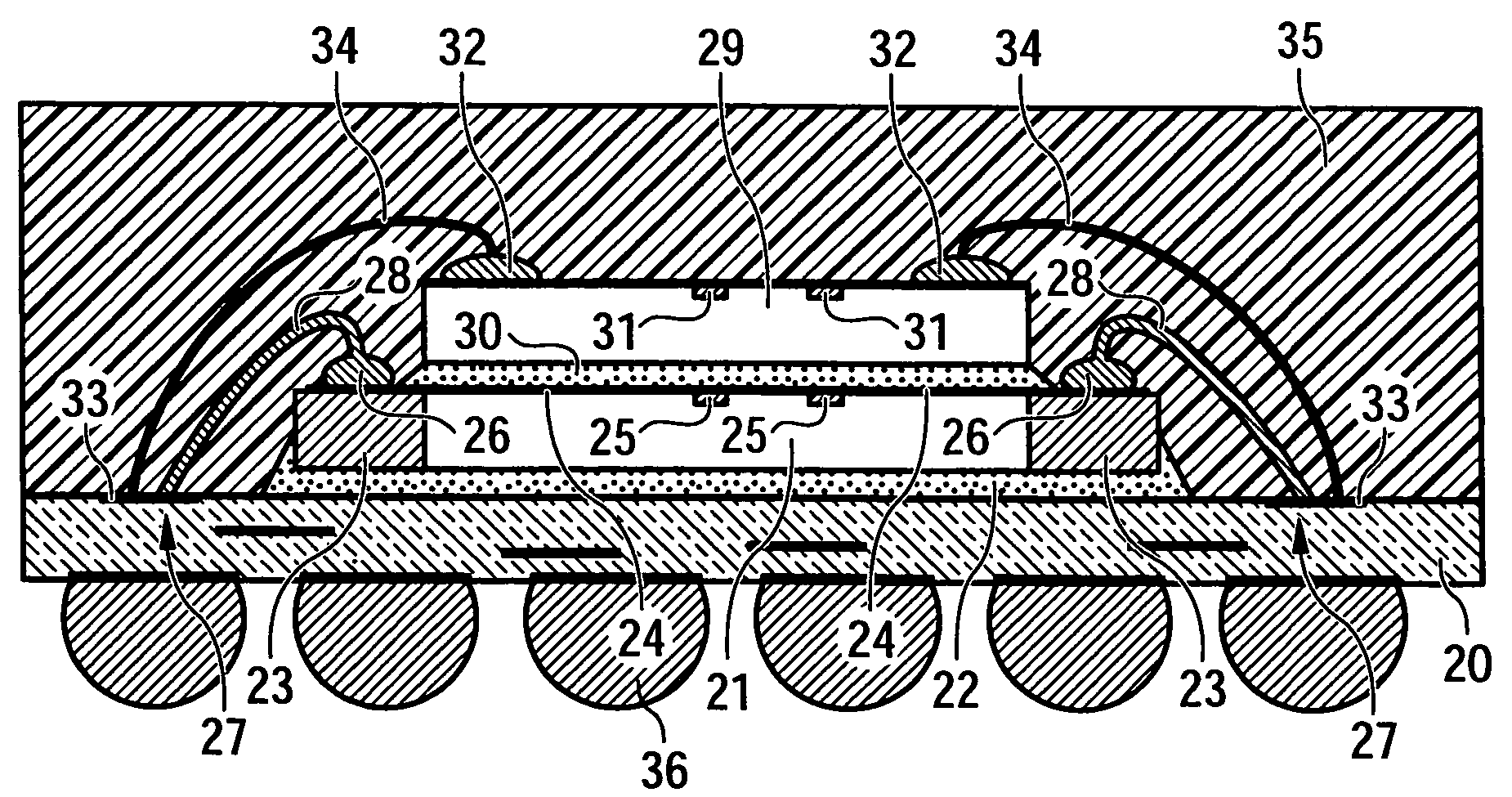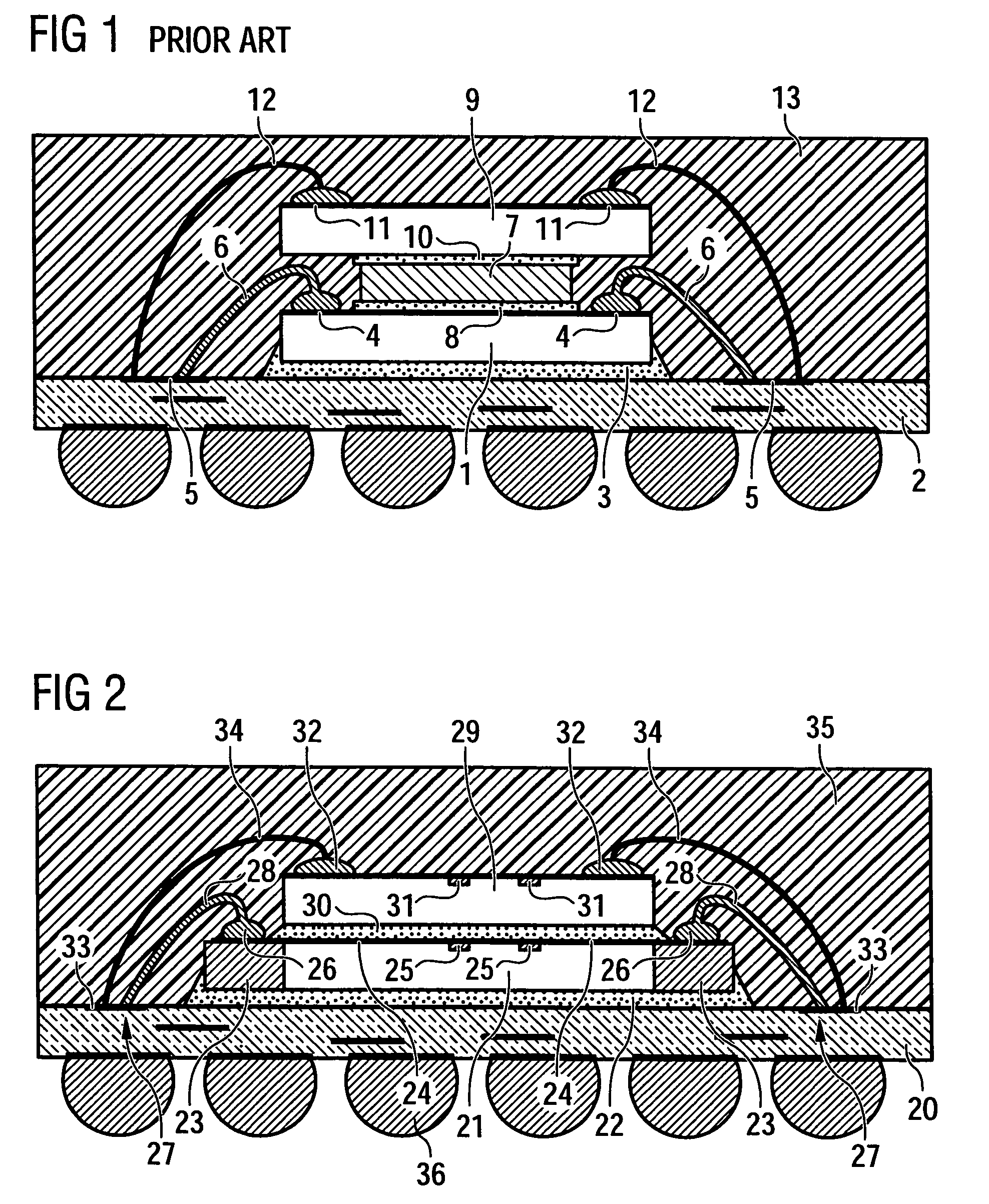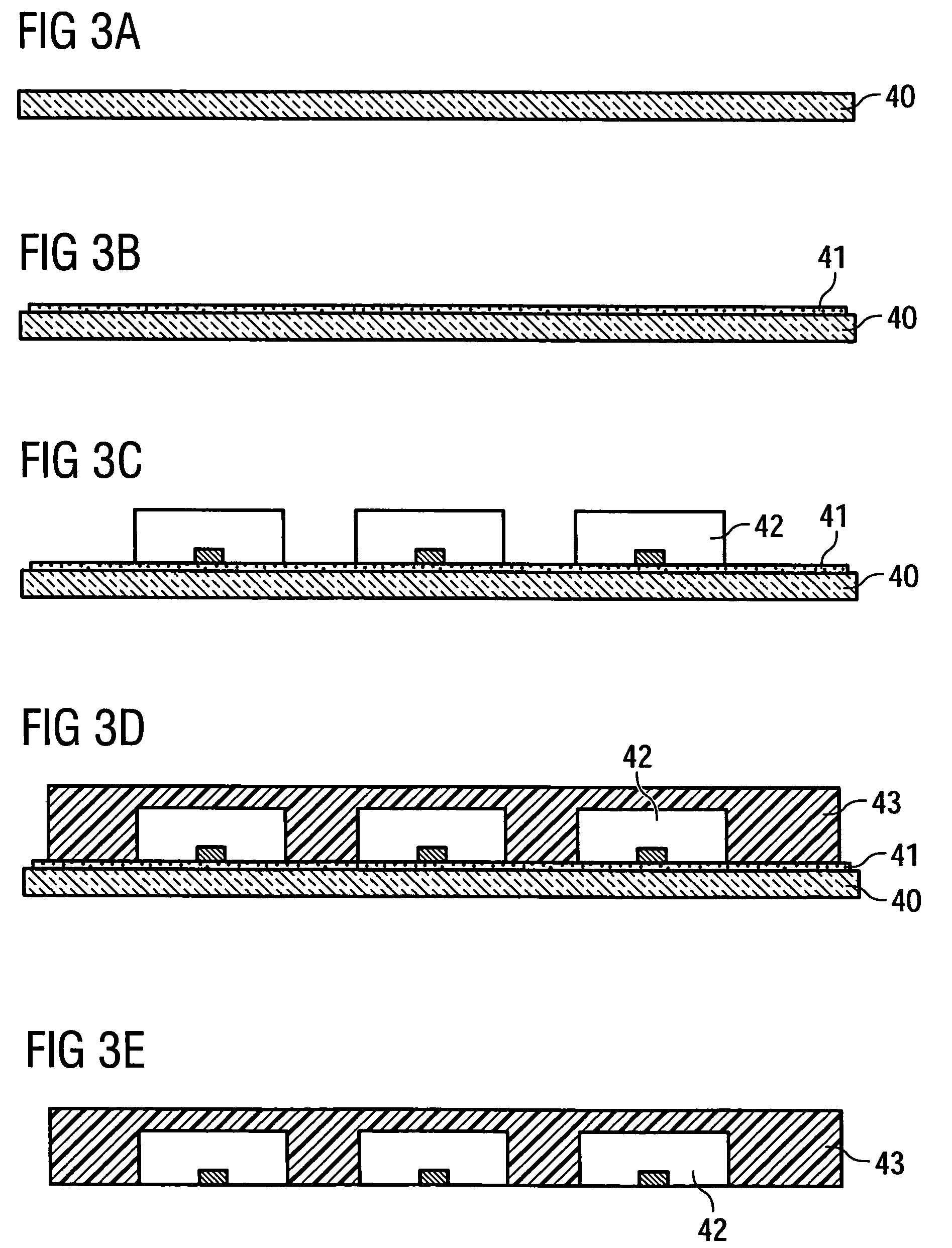Stacked die package
a technology of stacked dies and dies, applied in the direction of semiconductor devices, semiconductor/solid-state device details, electrical devices, etc., can solve the problems of high cost, limited number of functions realizable on a single chip, and more complex functions to be realized
- Summary
- Abstract
- Description
- Claims
- Application Information
AI Technical Summary
Benefits of technology
Problems solved by technology
Method used
Image
Examples
Embodiment Construction
[0030]FIG. 2 illustrates an embodiment of the invention with an interposer board 20 with a reconstituted die 21 mounted on the interposer board 20. The reconstituted die 21 is mounted on the interposer board 20 by a liquid adhesive 22 or an adhesive tape 22. The reconstituted die 21 is provided with a frame 23 to increase the die area (fan-out) to the mentioned reconstituted die 21. The top or active surface of the reconstituted die 21 is provided with RDL layer 24, which reroute the bond pads 25 arranged in a center row on the reconstituted die 21 to wire bond pads 26 positioned on the frame 23. The wire bond pads 26 can be connected with landing pads 27 on the interposer board 20 by wire loops 28. This interconnection can also take place in a later step after assembly of the top die(s).
[0031]Then a second die 29 is die bonded on the top surface of the reconstituted die 21 with an adhesive glue or tape 30. This die 29 can also be a reconstituted die with a smaller fan-out area than...
PUM
 Login to View More
Login to View More Abstract
Description
Claims
Application Information
 Login to View More
Login to View More - R&D
- Intellectual Property
- Life Sciences
- Materials
- Tech Scout
- Unparalleled Data Quality
- Higher Quality Content
- 60% Fewer Hallucinations
Browse by: Latest US Patents, China's latest patents, Technical Efficacy Thesaurus, Application Domain, Technology Topic, Popular Technical Reports.
© 2025 PatSnap. All rights reserved.Legal|Privacy policy|Modern Slavery Act Transparency Statement|Sitemap|About US| Contact US: help@patsnap.com



